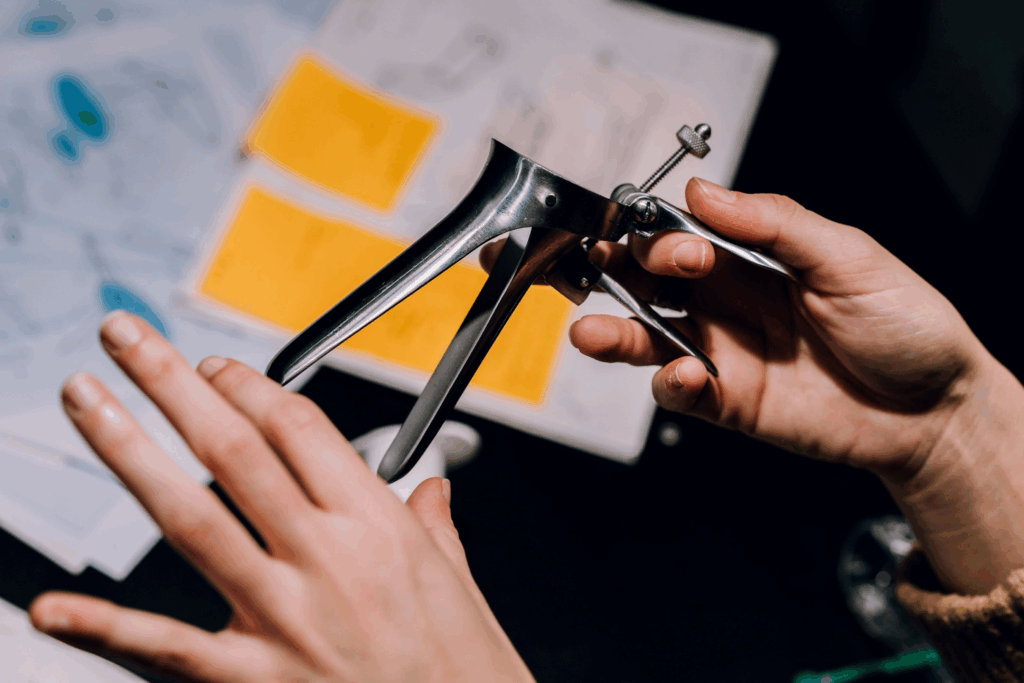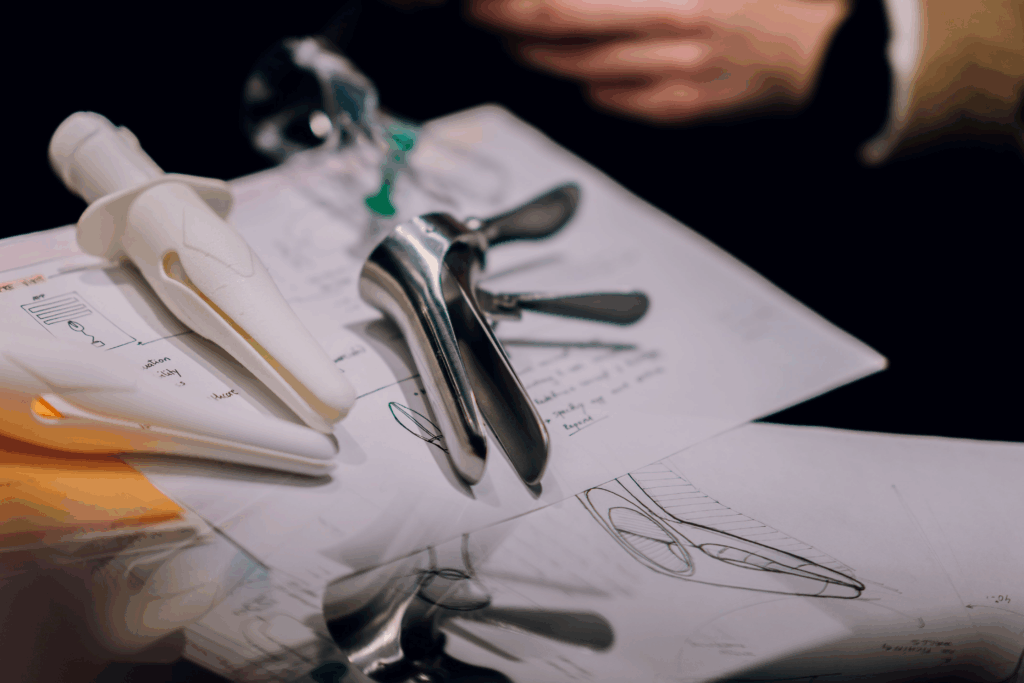Women Engineers Finally Redesigned the Speculum After 150 Years of Male-Made Pain
If the word “speculum” makes your stomach twist, you’re far from alone. For decades (actually, for centuries), people with vaginas have associated the tool with pain, anxiety, and vulnerability. Now, a new generation of women-led researchers wants to change that. And their design? It looks more like a flower than a duckbill.
The speculum hasn’t changed in over 150 years
The speculum’s origins date back to ancient Rome. Still, the version we know today was developed by J. Marion Sims in the 1840s, using enslaved Black women as test subjects without anesthesia. That history still echoes through doctor’s offices today, where many patients describe the cold metal device as painful, embarrassing, and traumatic.
As TU Delft industrial design researcher Tamara Hoveling told France24, “I’ve never seen it as a pleasurable experience and I’ve always wondered why it looks like this.”
For Hoveling and her collaborator, industrial design engineer Ariadna Izcara Gual, redesigning the speculum wasn’t just a class project. It was a personal quest. “I have a lot of experience with the vaginal speculum, unfortunately,” Hoveling said. That experience led her to dig into the object’s dark past. “It was tested on enslaved women without permission. So that motivated me even more to take on this project.”

Meet Lilium, the flower-shaped speculum
Together, Hoveling and Izcara Gual created Lilium, a soft, semi-flexible speculum made of medical-grade TPV rubber. Instead of hard metal blades that click open like a vice, Lilium has petal-shaped parts that gently open with a tube applicator, similar to a tampon.
According to India Today, the design has two main components: three rubber petals that resemble a flower, and a gentle tube that allows insertion. Patients can insert it themselves or have it inserted by a medical provider.
The idea is simple: when something looks and feels less intimidating, patients feel more in control. “The flower shape is to promote patients’ psychological comfort, as it is a well-known shape,” Izcara Gual explained in her TUDelft thesis.

Why the redesign actually matters
Up to 35% of women avoid pelvic exams due to pain, shame, or fear, according to TUDelft. For some, even the sight of the tool is enough to cause panic. Hoveling noted that many patients tense up the moment the device is inserted, which causes more discomfort once it’s opened. “Then the speculum is opened, pushing against these tense muscles and making it even more painful,” she told France24.
Those physical and emotional reactions have consequences. Cervical cancer, which is the fourth most common cancer among women worldwide, is often detected through procedures that use a speculum. As Hoveling told The Hindu, “I’ve received a lot of emails from women who told me they actually don’t go to the gynaecologist because of this device, because they’re scared, because they have a traumatic experience.”

This new speculum might be a game changer for patients and doctors
While the Lilium was built with patient comfort in mind, it also meets medical standards. Seven healthcare professionals, including doctors and nurses, tested the device on pelvic models. They reported better visibility, especially for patients with obesity or a prolapsing vaginal wall, where traditional speculums often fail.
It’s also more sustainable. Unlike the current models, which can include up to nine plastic or metal components, Lilium is made of just two. This makes it easier to clean, autoclave, and reuse, thereby reducing medical waste.
All eight patients who tried the Lilium prototype in early tests said they preferred it over the traditional metal version, India Today reported.

The crowdfunding success that’s pushing the design forward
When Hoveling and Izcara Gual launched a crowdfunding campaign to further develop the prototype, the response was immediate. Within two days, they raised over €100,000 (approximately $117,000), according to France 24.
“It’s also a sign. It’s proof there are people who really want change, that there is a real problem here and that the current market solutions are not the best,” Hoveling told AFP.
Now, the team is seeking partnerships to move into human trials, get regulatory approvals, and distribute the device more widely.

Redesigning the speculum is about more than comfort. It’s about control
Dr. Shema Tariq, a Sexual Health and HIV Consultant in the UK, told The New Feminist that these tools are about more than just function; they’re about power. “Objects are not objective or neutral. Social and political decisions shape objects and how they are used,” she said.
Shema is currently writing a book that explores the history of the speculum through anthropology, zines, and medical archives. She believes the discomfort around pelvic exams speaks to something deeper: how we’ve been taught to expect pain and keep quiet.
“If I’m feeling anxious, I should be empowered to say ‘I’m a bit nervous about this procedure.’ ‘Can we take it a bit more slowly?’ ‘Can you explain what you’re doing as you’re doing it?’” she shared. “As women, we are conditioned not to make a fuss.”
That’s exactly what Lilium is pushing back against.




